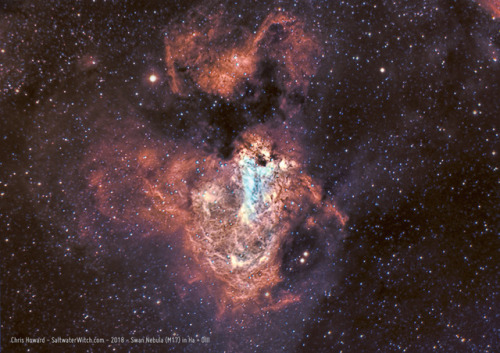
The Swan Nebula (M17) bi-color narrowband with the William Optics ZS61 and the Atik 414EX monochrome CCD. Messier 17 is also called the Omega Nebula, Checkmark Nebula, and sometimes the Horseshoe Nebula, but all I see is a swan–with a black beak, neck arched forward, and wings outstretched. The bright region in the middle is the swan’s chest. I shot the hydrogen-alpha frames on June 16th (16 x 300 second exposures + 82 x 120 second exposures) and I came back on the 21st to shoot 40 x 300 second exposures in oxygen-3. I decided not to shoot sulphur-2 frames based on the wonderful result with bi-color for my Cygnus Wall image set (6.8 hours of Ha + OIII). For the Swan Nebula (this post) and Cygnus Wall (last post) images I used the Hydrogen-alpha/Oxygen-3 bi-color process developed in an article by Travis Rector, et. al. in The Astronomical Journal here: https://doi.org/10.1086/510117, and detailed here: http://www.starrywonders.com/bicolortechniquenew.html
Published on June 26, 2018 14:17
